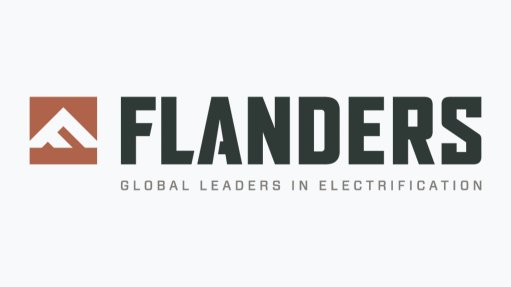DRC’s move to the east
In a move that will go some way towards the realisation of the dream of an integrated Africa, the Democratic Republic of Congo (DRC) joined the East African Community (EAC) late last month, becoming only the second country after Tanzania to have dual membership of the East African bloc and the Southern African Development Community (SADC).
While some analysts have expressed the view that the DRC must have realised that it would derive greater benefit from the EAC than if it had stuck with the ineffectual SADC only, my take is that the move broadens the bridge between the EAC and SADC regions, the single lane of which has hitherto been Tanzania. This bridge, in my view, is an important component in the broader project to integrate Africa through trade and other economic activities.
Following the DRC’s entry, the seven- member EAC now stretches from the east coast to the west coast of Africa and presents the potential to open the Indian Ocean to the Atlantic Trade Corridor and link the expanded bloc to Central Africa, North Africa and other subregions. However, at present, this is in the realm of theory, given the state of the DRC’s roads and rail network, which need massive upgrading. Indeed, the only way of getting across this sprawling country, which is about two-thirds the size of Western Europe, is by air.
As Tanzanian President Samia Suluhu noted during the admission summit, in the Kenyan capital of Nairobi, connecting the DRC’s railway network with the EAC network through the planned line from Tanzania to Burundi will provide an opportunity for increased access to EAC markets and reducing the cost of intraregional trade.
The DRC’s membership of the EAC – one of the most advanced blocs on the continent – means the integration of the bloc’s trade infrastructure, intermodal connectivity, one-stop border posts and systems to slash trade time and costs. Enthusing about the prospect of all this happening, EAC secretary-general Peter Mathuki said at the admission summit: “With lower tariffs on goods and the removal of trading restrictions among partner States, we anticipate that goods and services will move more freely. With a larger market, manufacturers in the EAC will benefit from economies of scale, making them efficient and competitive.”
That the DRC shares borders with all the other six member States but Kenya means that intraregional trade is bound to increase substantially. Despite its geographical proximity, the EAC’s exports to the DRC over the seven years to 2020 averaged only about 13.5% of the DRC’s imports. This can only increase when the trade-facilitating provisions of the DRC’s admission start kicking in.
Meanwhile, the fact that a sizable proportion of the DRC’s infrastructure – from roads to railways, energy and telecommunications – is either dilapidated or inadequate means that there are opportunities for businesses from elsewhere in the EAC to invest in its development.
Surely, all the economic advantages presented by the DRC, with a 95-million-strong population, were enough for the existing EAC members to overlook the fact that they were bringing into their fold a second problem child, given the perennial conflicts in its eastern regions. The other problem child is South Sudan, which has not experienced complete stability since seceding from Sudan in 2011.
Some analysts have suggested that the DRC’s joining the EAC will potentially assist in resolving its never-ending internal conflicts. The rationale is that the former Belgian colony now has six additional accountability partners with which it can navigate this particular problem with a greater sense of urgency. It could also seek the support of fellow EAC member States that have had to deal with insecurity – the likes of Kenya.
All the best to the DRC as it embarks on this new journey.
Article Enquiry
Email Article
Save Article
Feedback
To advertise email advertising@creamermedia.co.za or click here
Comments
Press Office
Announcements
What's On
Subscribe to improve your user experience...
Option 1 (equivalent of R125 a month):
Receive a weekly copy of Creamer Media's Engineering News & Mining Weekly magazine
(print copy for those in South Africa and e-magazine for those outside of South Africa)
Receive daily email newsletters
Access to full search results
Access archive of magazine back copies
Access to Projects in Progress
Access to ONE Research Report of your choice in PDF format
Option 2 (equivalent of R375 a month):
All benefits from Option 1
PLUS
Access to Creamer Media's Research Channel Africa for ALL Research Reports, in PDF format, on various industrial and mining sectors
including Electricity; Water; Energy Transition; Hydrogen; Roads, Rail and Ports; Coal; Gold; Platinum; Battery Metals; etc.
Already a subscriber?
Forgotten your password?
Receive weekly copy of Creamer Media's Engineering News & Mining Weekly magazine (print copy for those in South Africa and e-magazine for those outside of South Africa)
➕
Recieve daily email newsletters
➕
Access to full search results
➕
Access archive of magazine back copies
➕
Access to Projects in Progress
➕
Access to ONE Research Report of your choice in PDF format
RESEARCH CHANNEL AFRICA
R4500 (equivalent of R375 a month)
SUBSCRIBEAll benefits from Option 1
➕
Access to Creamer Media's Research Channel Africa for ALL Research Reports on various industrial and mining sectors, in PDF format, including on:
Electricity
➕
Water
➕
Energy Transition
➕
Hydrogen
➕
Roads, Rail and Ports
➕
Coal
➕
Gold
➕
Platinum
➕
Battery Metals
➕
etc.
Receive all benefits from Option 1 or Option 2 delivered to numerous people at your company
➕
Multiple User names and Passwords for simultaneous log-ins
➕
Intranet integration access to all in your organisation














